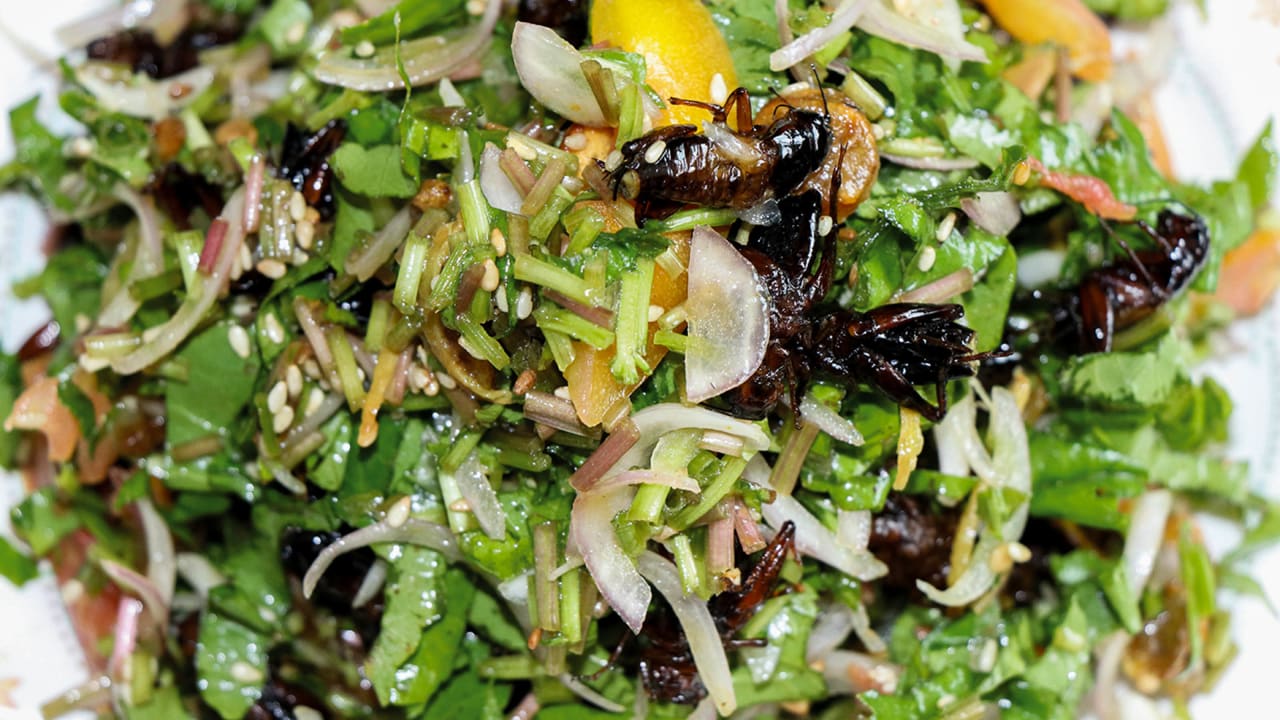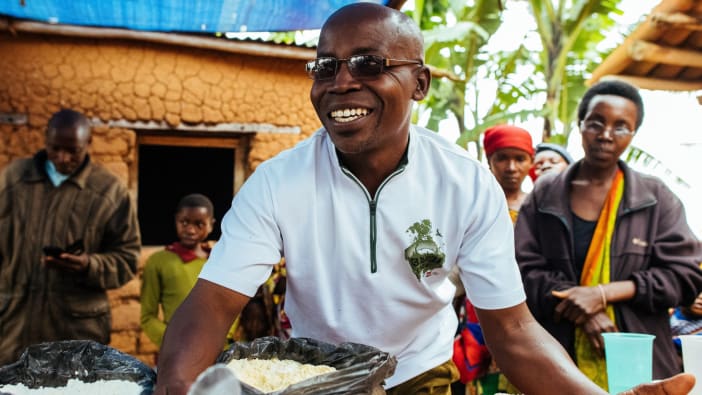Myanmar: Cricket and pennywort salad
Ingredients
- 1 bunch Myin khwa ywet (pennywort), or any green leafy vegetable that can be eaten raw
- 40g sesame seeds
- 1 onion
- 1 tomato
- 25 crickets
- 1 teaspoon salt
- 1 piece ginger, chopped
- 5 garlic cloves, crushed
- 2 tablespoons sunflower oil
- ¼ lime
Method
1. Wash and prepare the vegetables:
- cut or slice the pennywort into small pieces and set aside
- slice the onion into small pieces
- cut the tomato into small pieces.
2. Wash the crickets and remove the wings and legs.
3. Heat the oil in the frying pan and fry the onion, ginger and garlic until the onion changes colour.
4. Add the crickets to the frying pan and cook until they are brown and crispy.
5. Place the cut pennywort into a bowl with the tomato pieces, the sesame seeds and a sprinkling of salt. Add the fried crickets and onion and mix well together.
6. Serve sprinkled with lime juice.
This recipe is from the book Everyday insects by Ei Phyu. Published by Spectrum in Myanmar. facebook.com/everydayinsects








